Sage Publications, Inc. (Books and Journals)
12172 results for Sage Publications, Inc. (Books and Journals)
-
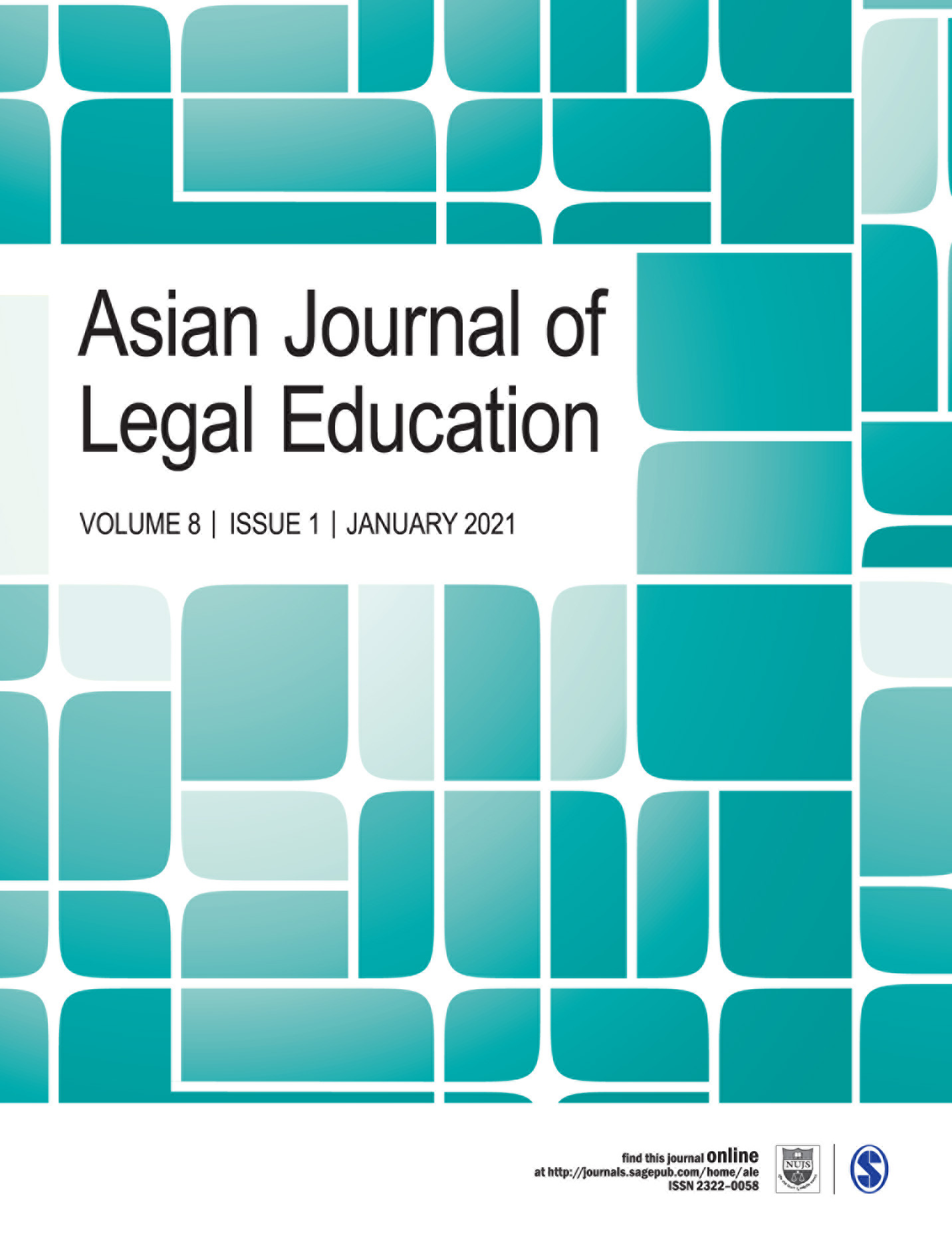 Asian Journal of Legal Education
From No. 1-1, January 2014
to No. 10-2, July 2023
Sage Publications, Inc., 2021
Asian Journal of Legal Education
From No. 1-1, January 2014
to No. 10-2, July 2023
Sage Publications, Inc., 2021
-
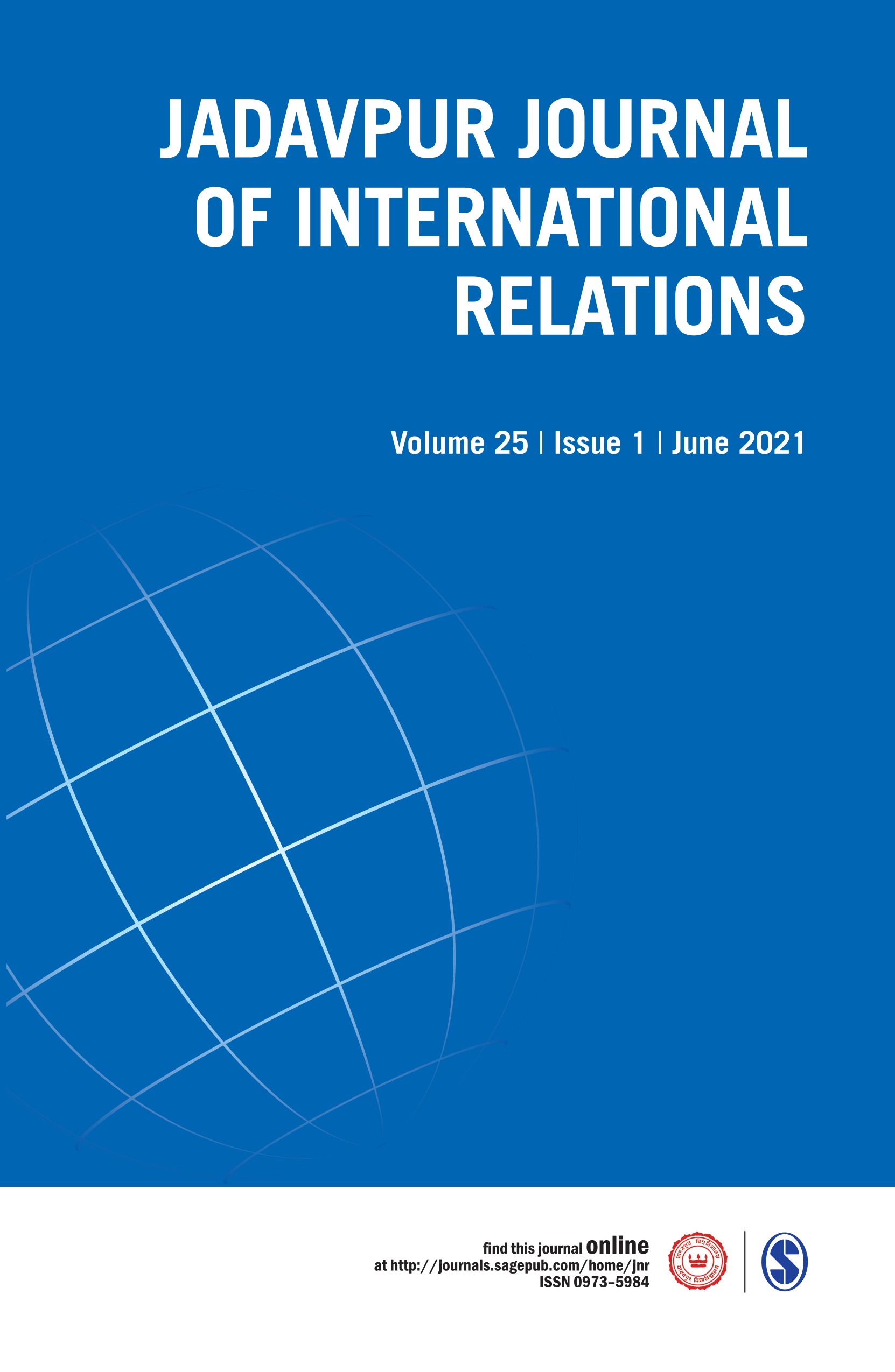 Jadavpur Journal of International Relations
From No. 1-1, June 1995
to No. 26-2, December 2022
Sage Publications, Inc., 2021
Jadavpur Journal of International Relations
From No. 1-1, June 1995
to No. 26-2, December 2022
Sage Publications, Inc., 2021
-
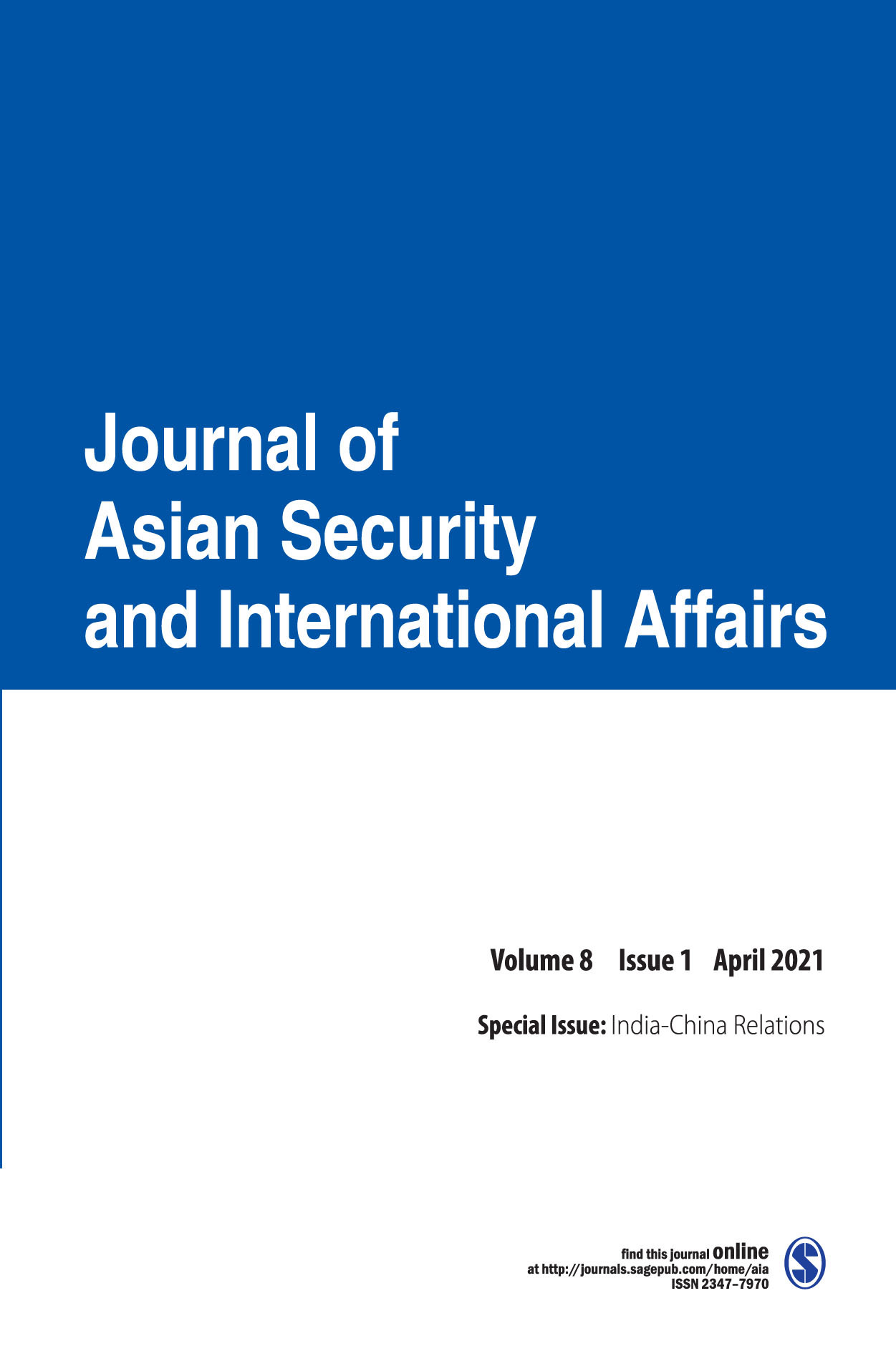 Journal of Asian Security and International Affairs
From No. 1-1, April 2014
to No. 10-1, April 2023
Sage Publications, Inc., 2021
Journal of Asian Security and International Affairs
From No. 1-1, April 2014
to No. 10-1, April 2023
Sage Publications, Inc., 2021
-
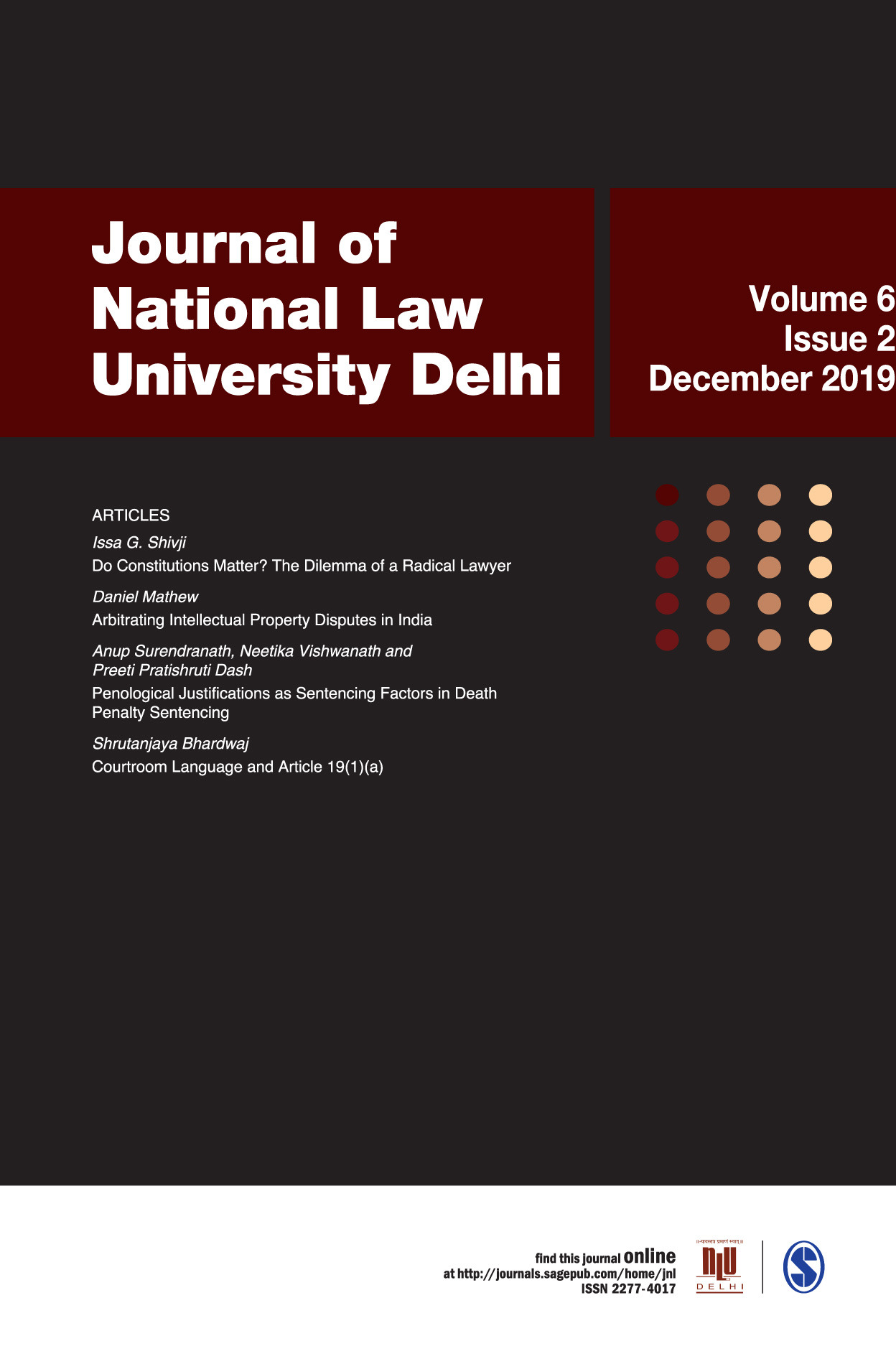 Journal of National Law University New Delhi
From No. 1-1, June 2013
to No. 8-1-2, June 2021
Sage Publications, Inc., 2021
Journal of National Law University New Delhi
From No. 1-1, June 2013
to No. 8-1-2, June 2021
Sage Publications, Inc., 2021
-
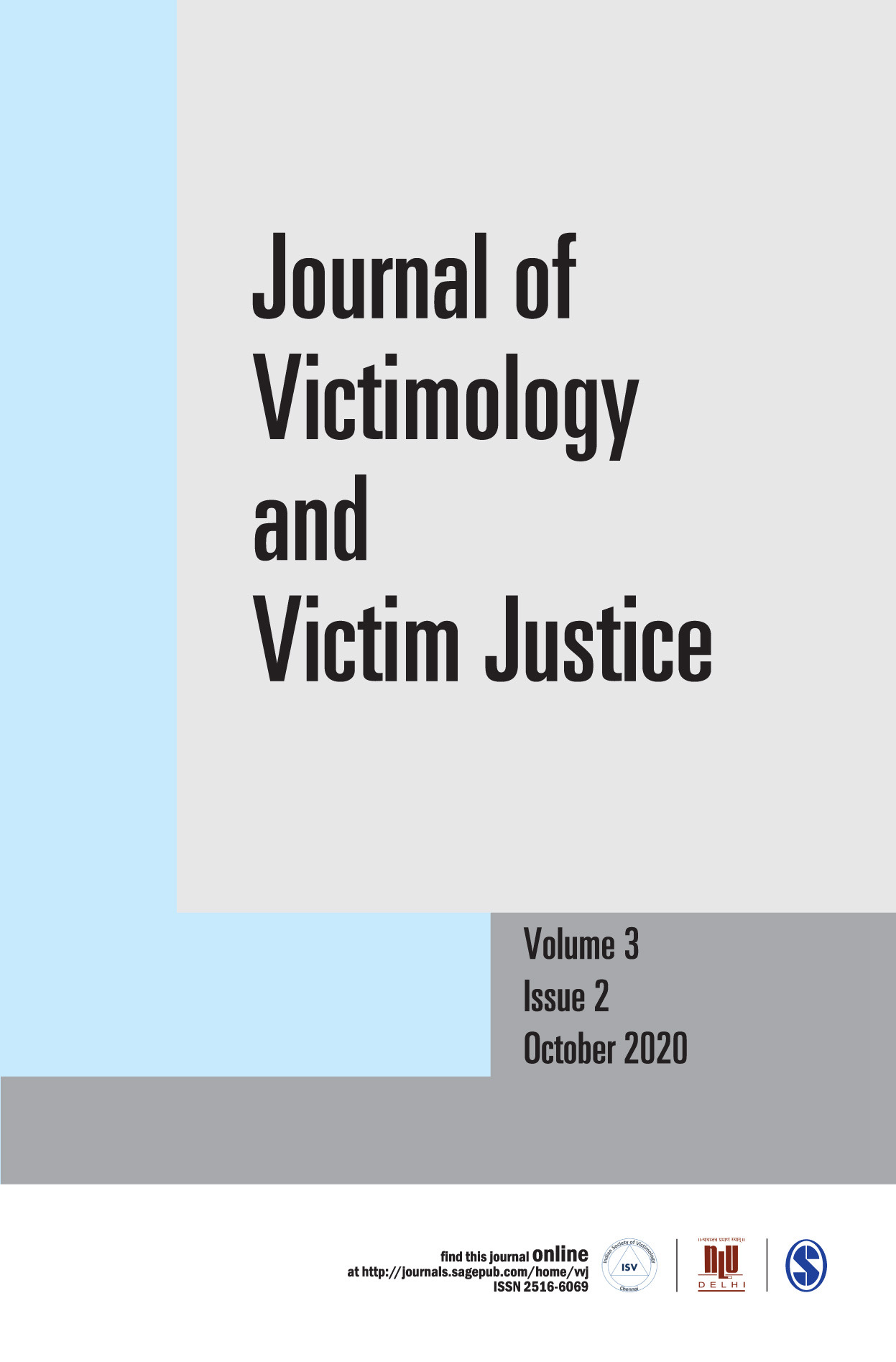 Journal of Victimology and Victim Justice
From No. 1-1, July 2018
to No. 5-2, October 2022
Sage Publications, Inc., 2021
Journal of Victimology and Victim Justice
From No. 1-1, July 2018
to No. 5-2, October 2022
Sage Publications, Inc., 2021
-
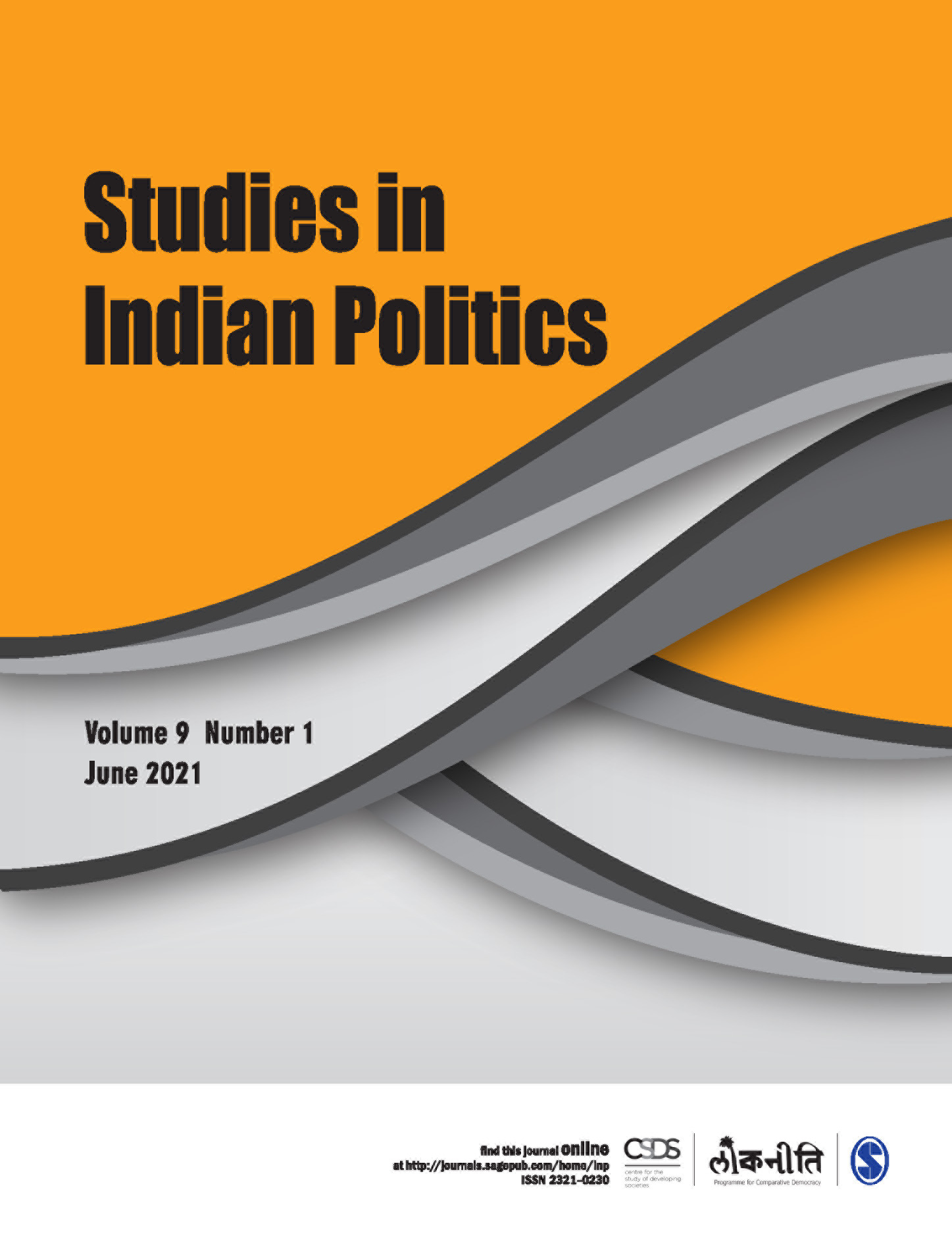 Studies in Indian Politics
From No. 1-1, June 2013
to No. 10-2, December 2022
Sage Publications, Inc., 2021
Studies in Indian Politics
From No. 1-1, June 2013
to No. 10-2, December 2022
Sage Publications, Inc., 2021
-
 Foreign Trade Review
From No. 1-1, April 1966
to No. 58-4, November 2023
Sage Publications, Inc., 2021
Foreign Trade Review
From No. 1-1, April 1966
to No. 58-4, November 2023
Sage Publications, Inc., 2021
-
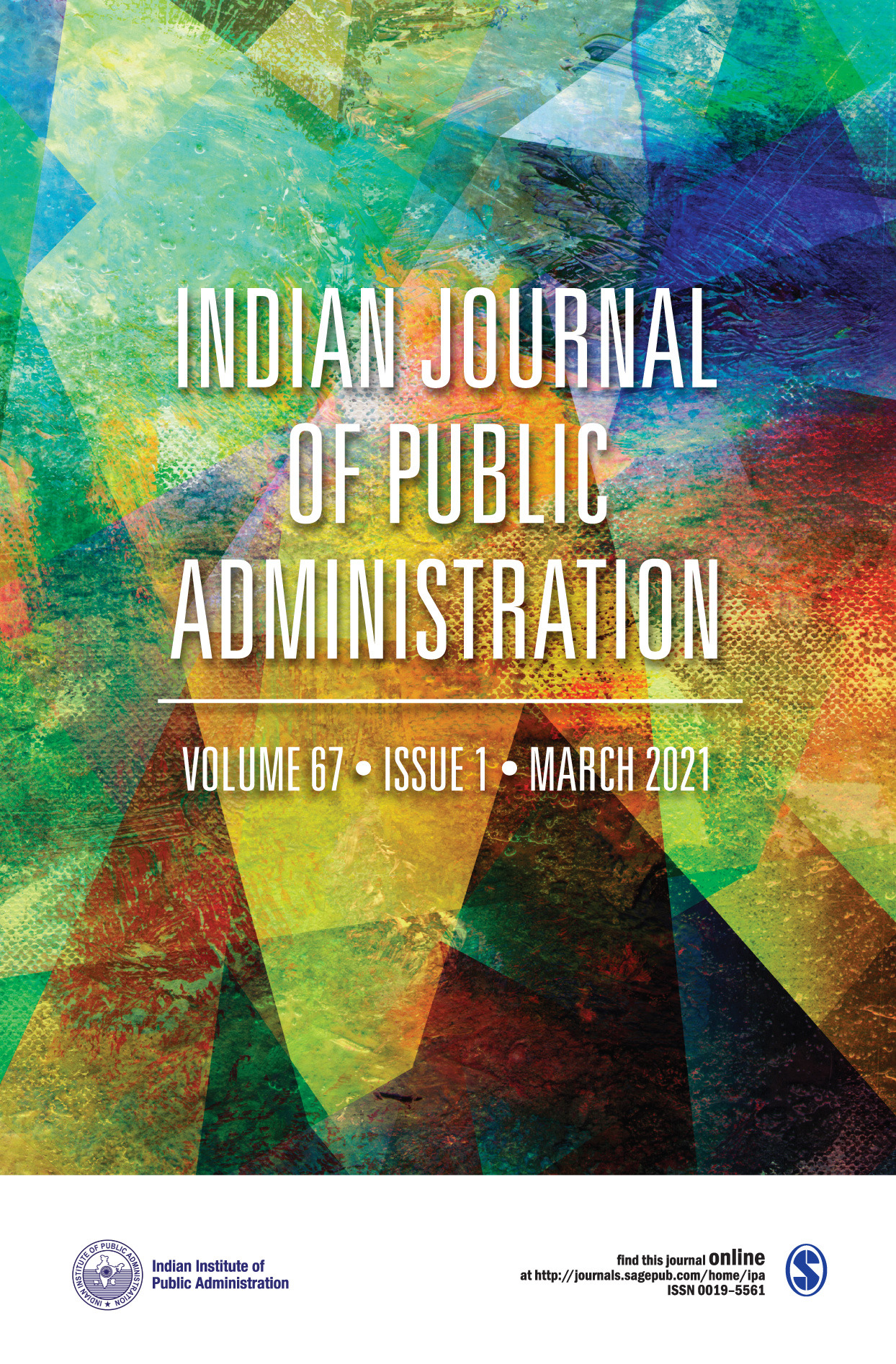 Indian Journal of Public Administration
From No. 1-1, January 1955
to No. 69-4, December 2023
Sage Publications, Inc., 2021
Indian Journal of Public Administration
From No. 1-1, January 1955
to No. 69-4, December 2023
Sage Publications, Inc., 2021
-
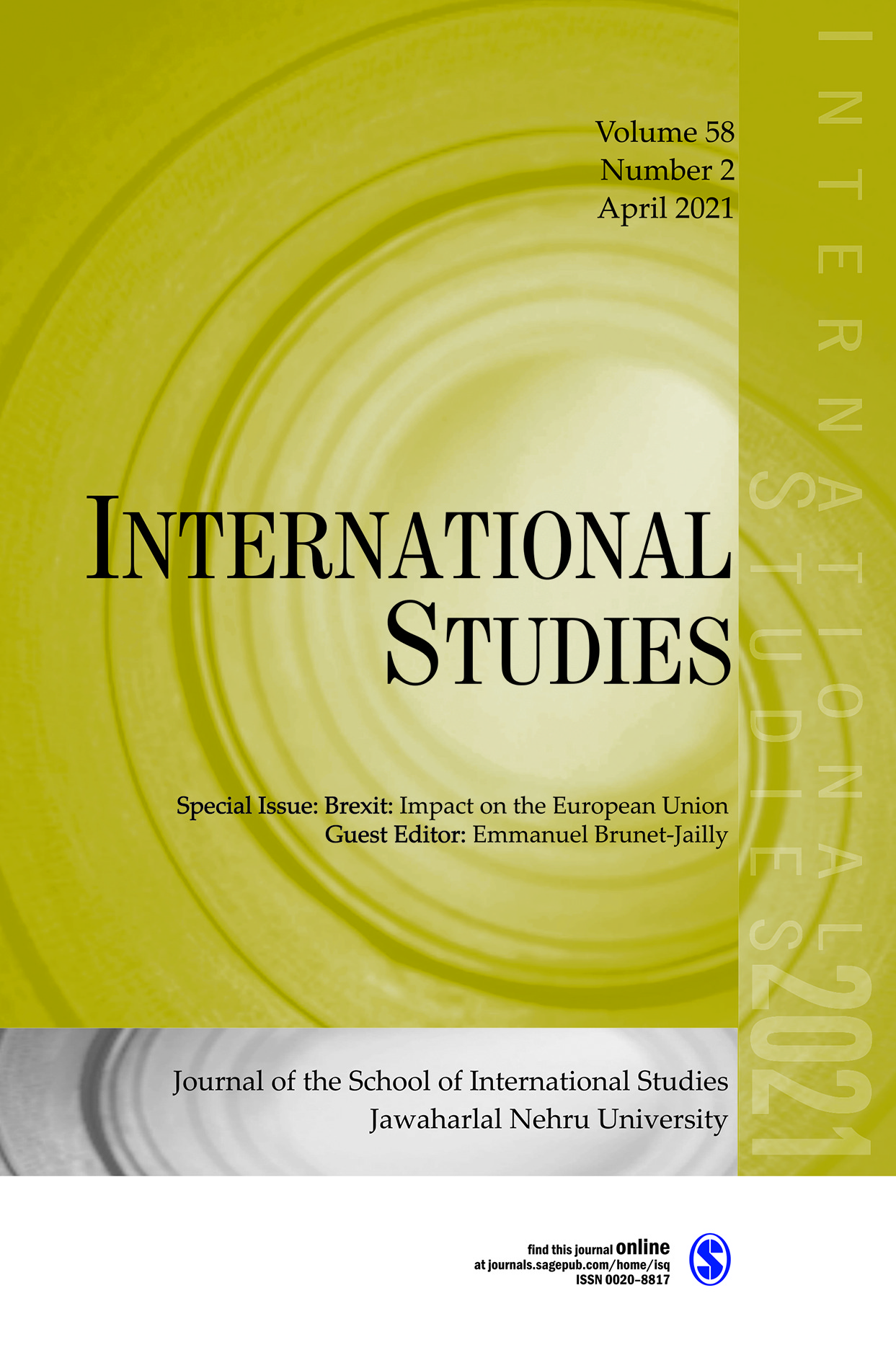 International Studies
From No. 1-1, January 1959
to No. 60-1, January 2023
Sage Publications, Inc., 2021
International Studies
From No. 1-1, January 1959
to No. 60-1, January 2023
Sage Publications, Inc., 2021
- RTI Act and Financial Institutions Altercation: An Anathema to Progressive Democratic Regime
-
Emerging Trends of Cybernated Transactions in India: An Outlook Amidst Covid-19 Pandemic
In Indian economy, the cashless transaction is not a new phenomenon. However, the pandemic gave a sizeable push in the endeavour to marginalise cash transactions. The objective of this article is to discover the actual impact of Covid-19 on the preferences of people while making transactions. For primary data collection, Google questionnaire was sent all over India to all age-groups. Respondents...
-
Fiscal Discipline and Its Relationship with Economic Growth in India: Evidence-based Policy Analysis
This study attempts to make an empirical analysis to evaluate the procedural progress of India in terms of public policy parameters. The study constructs a composite Fiscal Performance Index (FPI) for the period 1990–2018. The reported values show that the FPI has been significantly increasing over the last two-three decades. However, it is clearly evident that the fiscal discipline was slightly...
-
Four Years of Goods and Services Tax in India: Road Ahead
The ideology behind GST was to reduce the multiplicity of existing indirect taxes and implement a uniform taxation structure across the nation. A perfect GST would have been wherein the GSTs are taxed at a single tax rate, subject to minimal or no exceptions. However, for a country like India, a tiered tax rate structure becomes inevitable to take into account the larger social agenda. GST is in...
-
Management of Kasturba Gandhi Balika Vidyalayas in Andhra Pradesh: The Perceptions of the Stakeholders
The introduction of Kasturba Gandhi Balika Vidyalayas (KGBVs) in the educationally backward blocks of the country poses challenges for the mobilisation, retention and educational activities of students. The children admitted to these schools are different from those of mainstream schools. The socio-economic background of the girls has been indicating that they are child labourers, never enrolled,
-
An Analysis of the Position of Speaker in Lok Sabha in India from 1952 to 2020 withSpecial Reference to the Position of Speaker of House of Representatives in the United States
The Speaker of Lok Sabha in India is regarded as the most important office of legislative functioning. The office of the Speaker is regarded with high esteem and respect in the Parliament. The election of the Lok Sabha Speaker in India carries with it a unanimous trust of different parties in one chair. The Speaker of the United States House of Representatives is regarded as the presiding officer
- The Economic Logic of Strongmen Politics
-
Crime Against Women in India: A Theoretical Review
Sexual, physical or emotional violence against women in India is a serious form of exploitation that needs to be prevented in the nation. The objective of this article is to highlight the increasing rate, number and forms of this violence against women in the country. To protect women at individual level, it is essential to know about the forms and severity of the crimes. Further, this article is
-
Understanding Sub-State’s Agency in Regionalism: The Case of Yunnan in Bangladesh–China–India–Myanmar Initiative
Regionalism constitutes an essential unit to understanding the nature and evolution of multi-actor-dominated contemporary international relations. The ‘subnational turn’ in the regional interactions recognizes the rising role of sub-state actors such as provinces in the ‘construction’ and ‘performance’ of the ‘regionness’ to access the developmental benefits of regional and globalized capital....
- Editorial
-
Deradicalization of Repentant Boko Haram Militants: Institutional Dilemma Between the Victims and Villains in Northeast Nigeria
Over the years, Boko Haram has taken the centre stage in Nigeria’s security concern and discourses as it consistently stands out on news headlines. After many years of counterinsurgency, Nigeria’s government realized the imperative of adopting a soft approach alongside military offensives to winning the war against insurgency. One soft approach is the institution of deradicalisation programme....
-
Realisation of Sustainable Development Goals Through Panchayati Raj Institutions
Gram panchayats (GPs), being constitutionally mandated and closest to the people, can anchor the responsibility of localising the implementation of the UN Sustainable Development Goals (SDGs) and achieving them by the year 2030. In this article, published reports have been used for analysing state-wise status of SDGs achievements and their correlations with attainments in areas of poverty-reductio
-
‘Sovereign Democracy’: Russian Response to Western Democracy Promotion in the Post-Soviet Space
Russia became apprehensive after the outbreak of Colour Revolutions in three former Soviet republics. Post-revolution, Russia’s foreign policy in general and its outlook toward the West in particular transformed significantly. Russian response to Western democracy promotion became more pronounced. Against this backdrop, the concept of Sovereign Democracy has to be understood. It aims to not only...
-
Judiciary as a Bureaucratic Organisation and Its Public Value
In 2021, India fell three positions in the Rule of Law Index released by the World Justice Project (2019). The India Justice Report 2020 shows the pathological disparity in access and administration of justice in India. Why is it that despite decades of judicial reforms, justice delivery in India continues to remain poor? This paper argues that judiciary is looked at and studied from the...
-
The Three Decades of Look East Policy and India’s Northeast Region
India has been trying to enhance overland trade and the movement of people between South and Southeast Asia through its northeast region, as well as Myanmar and Bangladesh. To materialize this, the Look East policy has been giving due emphasis on developing strategic roads and logistic facilities in the northeast region. Myanmar and Bangladesh are also crucial to achieve the twin objectives, and...
-
Large-scale Fortification of Rice in India and Its Distribution in Public Distribution System
Rice fortification with micronutrients is getting popularity in supplementation programmes as it provides cost-effective, easy and public-health-solution to treat anaemia and protein-energy-malnutrition. In India, A pilot scheme for rice- fortification and its distribution under Public Distribution System in fifteen districts was started for a period of 3 years (2019–2022). To examine effect of...
-
Effectiveness of e-Governance Initiatives in India: A Study of Telangana Palle Samagra Seva Kendralu
Governments worldwide are compelled to transform government systems to ensure citizen-centric service delivery through innovative information and communication technologies. Use of e-governance has become a key weapon to combat the evils of mismanagement and corruption. India has witnessed more than two decades of ushering of e-governance initiatives. The present study is set in the context of...
-
Environmental Governance at Crossroads: Civil Society’s Fight Against Industrial Pollution in Kathua Industrial Area, Jammu and Kashmir
As a key stakeholder within the domain of environmental governance, the civil society influences the actions and outcomes of regulatory processes, mechanisms and organisations in addition to state, market and communities. The research article attempts to understand the influence the civil society exerts in addressing the environmental concerns of three village panchayats of Kathua district, Jammu
-
Evaluating the Legal and Policy Measures in Protecting Unorganised Domestic Workers in Delhi
Women’s economic independence is one of the main criteria for women’s empowerment and gender equality. Around 90% of the women in India work in the informal sector. As per the estimation of the International Labour Organization, over 20–80 million domestic workers operate in India. The Central and state governments have taken various legal and policy measures to ensure the rights of domestic...
- Cloud-based Smart Voting: Opportunity of Gender Inclusiveness in India
-
Human Rights of the HIV-Infected Persons in India: Issues and Concerns
Human rights are basic rights of human beings regardless of gender, religious identity and nationality. Human beings and their rights are constitutionally and legally protected. Though safeguards are there against human rights violations, Human Immunodeficiency Virus (HIV) infected people have to face several injustices in our society. People living with HIV are usually subjected to...
-
Gender Quota and Women’s Participation in Rural Local Bodies in India: The Context, Constraints and Consequences
Gender quota in democratic institutions is now widely regarded as a tested tool to promote gender justice despite limitations. In this article, an attempt has been made to capture and analyse in the light of secondary source material including my own small study in one of the Indian States, West Bengal, on the impact of reservation of seats for women as elected women representatives in rural...
-
Exchange Rate Changes and the J-curve Effect: Asymmetric Evidence from a Panel of Five Emerging Market Economies
Using the symmetric and asymmetric specifications of the pooled mean group estimator, we attempted to scrutinise the possibility of the J-curve effect in the case of Brazil, Russia, India, China and South Africa. In addition to both real effective exchange rate changes and nominal effective exchange rate changes, the possible impact of domestic and foreign demand pressures on the trade balance is
-
Prediction of Electricity Trade Partners Based on the Network Theory: The West Asia Community
This study aims to predict electricity cross-border trade partners based on the network theory and to investigate the position and importance of West Asia community in the global electricity trade network. For this purpose, the global network is constructed to examine the role of each node in the network for the time period of 2010–2018. Different communities are identified to proceed with the...
-
Trade Data Falsification and Informal Capita Movement: A Study of Bangladesh with Major Asian Trade Partners
The imposition of restrictive trade policies and consequent fabrication of foreign trade statistics acts as hindrance for effective policy formulations in the developing countries. This article presents the trade misreporting scenario of Bangladesh in relation to major Asian trade partner countries (China, India and Singapore) between 1973 and 2018 and examines the possibilities of informal...
-
Asymmetric Exchange Rate Pass Through to Consumer Prices: Evidence from Zambia
The purpose of this study was to examine the asymmetric exchange rate pass through (ERPT) to consumer price inflation in Zambia. We examined ERPT to consumer price inflation arising from kwacha depreciation and appreciation for the period between the first quarter of 1985 to the fourth quarter of 2017. We employed the structural vector autoregressive model. The results showed that ERPT to...
-
General Equilibrium Trade Policy Analysis among One Belt One Road Nations Using Structural Gravity Framework
Currently, the world is witnessing one of China’s most significant economic integration initiatives–One Belt One Road (OBOR). This article aims to evaluate the general equilibrium (GE) effects of this initiative on member nations. The structural gravity model is used in this study to perform the counterfactual analysis while analysing the conditional and general equilibrium effects of the trade...
-
Restorative Justice for Sexual Violence Offences in England and Wales: The Challenges Ahead
While an increased number of restorative justice (RJ) cases involving sexual violence are observed across England and Wales, the extent and scope of its use remain unclear. This article presents the findings of a brief survey distributed amongst RJ practitioners across England and Wales which aimed to understand the use of RJ in cases of sexual violence. We found that while RJ is widely used in...
-
A Socio-legal Study in the Cambodian Ponzi Scheme: With Reference to Japan and the United States
This article recommends establishing an investment fraud investigation, a Customer Consultant Agency and a Victim’s Fund Recovery Team to address the problem of the Ponzi scheme in Cambodia. Furthermore, the paper also details how the enactment and law reform prevent customers or investors from becoming the scheme victims and improve prevention, detection, prosecution and fund recovery through...
-
Digital Evidence in Police Investigation: A Comparative Analysis of Challenges Faced in India, the UK and the United States
This research explores the challenges posed by the use of digital evidence in criminal investigations, particularly in the context of fair trial and the presumption of innocence. The article identifies three key issues that could compromise the impartiality and presumption of innocence in investigations, namely, improper and inconsistent use of technology, outdated procedural assurances and a...
